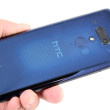Review: Google Pixel 2 XL
Nov 15, 2017, 2:00 PM by Eric M. Zeman

The Pixel 2 XL is Google's flagship Android handset. Though the software is more important than the hardware, the Pixel 2 XL is a big statement from Google. This high-end handset contains top components that deliver competitive performance across the board. The camera is particularly impressive, allowing the Pixel to go toe-to-toe with the best from Apple, LG, and Samsung. Here is Phone Scoop's in-depth review.
Hardware
Is It Your Type?
The Pixel 2 XL from Google is a top-of-the-line smartphone that includes a powerful camera, a large display, a metal design, and the pure Google experience that many Android fans relish. If you're seeking the most Androidful Android phone, the Pixel 2 XL delivers the goods.
Background
Google releases a new set of Google-branded smartphones each fall. The idea is to offer Android enthusiasts ideal hardware to showcase the best of Google's software. This year's Pixel 2 and Pixel 2 XL run the same software, but straddle the currently evolving smartphone form factor. Where the Pixel 2 is slightly smaller and relies on the older 16:9 aspect ratio display, the Pixel 2 XL is larger and moves to the 2:1 (18:9) aspect ratio screen that's being adopted by today's most popular flagships. HTC makes the Pixel 2, while LG makes the larger Pixel 2 XL.
Body
Google has a decidedly simple idea of what hardware should look like. No phone designed by Google has ever been particularly striking in its appearance. This year's Pixel 2 and Pixel 2 XL feel even more generic to me. The Pixel 2 XL does everything possible to make you forget you're even holding a high-end piece of hardware and instead help you focus on the Googleyness behind the screen. That's the point.
The 2 XL is a monolithic device. It's tall, commanding, a doorway into the void. Its dimensions are awkward. The 2 XL stretches the industrial design of last year's Pixel and merges it with the 2:1 screen shape overtaking the market now. The result is a handset that bears the gawky look of a teenager who has suffered some uneven growth spurts.
The phone's face is black glass from top to bottom, while the phone's back is covered by a smaller black glass panel. A one-piece metal chassis forms the side edges and most of the rear panel. The metal is available in black or white (the latter being referred to as the "panda" variant). I really liked the texture of the metal on last year's phone. This year, the painted metal has a rougher texture that I'm not sold on.
At 6.22 inches, the 2 XL qualifies as a Really Tall Phone. To make room for the stereo speakers, the phone has a visible forehead above — and visible chin below — the display. The phone is also more than 3 inches wide. Thanks in part to the ~2:1 shape, it feels like a surfboard in your hand. I'm glad it's under 8mm thick, and thank goodness the weight isn't unbearable. It may simply be too much phone for some people. The smaller Pixel 2 might be a better option if you have small hands. Similar to the elongated Note8, the Pixel 2 XL is uncomfortable to carry around in your jeans pocket. It becomes a leg-poking plank along your thigh, and the experience gets old fast when you get poked every time you get into and out of a car. Putting a case on it only makes it worse.
The fit and finish of the phone's materials and manufacture are not in question. The external glass and metal components are assembled with precision. It feels like the high-end phone that it is.
Curved glass covers the entire front surface. The edges of the 2 XL's glass panel are curved more than on most phones. There are no physical buttons marring the glass.
Speaker Housing

The screen lock and volume buttons on the right edge have excellent profiles. Google positioned the screen lock button near the top and put the volume toggle in the middle. I prefer the lock button to be the lower of the two. Positioning aside, both buttons have perfect travel and feedback. You'll find the SIM tray on the left edge of the 2 XL, but you won't find support for memory cards.
The USB-C port is on the bottom. There's no headphone jack, a first for a Nexus/Pixel phone. Google includes an adapter in the box, but not a set of USB-C headphones.
USB-C
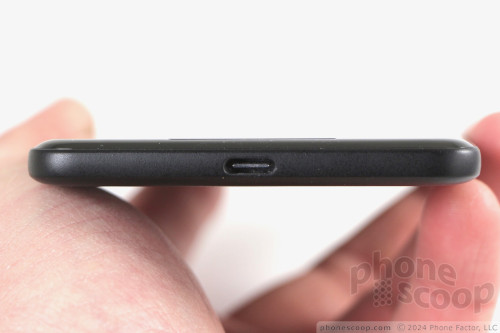
There is some good news: the 2 XL is water resistant to 3 feet (for 30 minutes). That means your phone can handle a run in the rain and an accidental dunk in the pool.
The rear panel is about 80% metal and 20% glass. The glass houses the camera module, flash, and sensors, most of which are plainly visible. The glass is the big reason the phone's chassis has no antenna lines, something I appreciate. The camera sticks out a bit from the surface of the glass. It has a dark, reflective rim that calls it out visually. The dual-LED flash also has a similar rim. The fingerprint reader is located perfectly on the rear panel. It's indented a bit and I had no trouble finding and using it without looking. If you have small hands, you might find it's a bit high up. The metal/glass chassis mean you have no access to the internal battery.
Fingerprint Reader
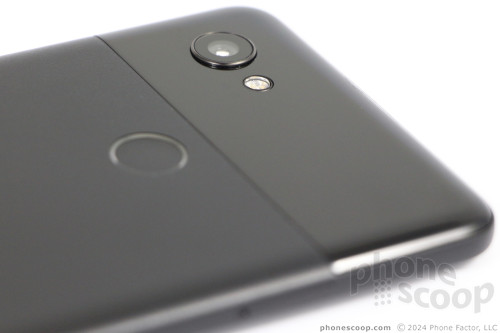
Each year I'm a bit conflicted on the design of Google's signature devices and this year is no different. There are things I like about the Pixel 2 XL (materials, quality) and things I don't (paint, size/shape). The Pixel itself is supposed to disappear as you experience the Google within. In that respect, it almost succeeds.
Module
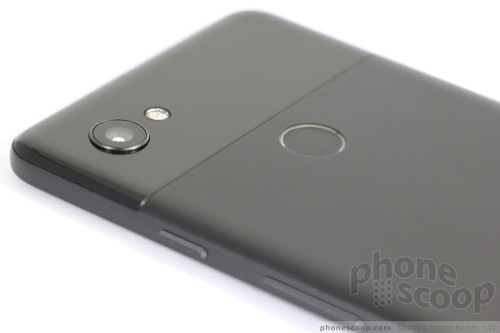
Screen
We've already had a lot to say about the Pixel 2 XL's display. For the full story, please read our earlier impressions. We're reassessing the phone now because Google has made good on its promise to deliver a software update to resolve some of the problems we experienced when the phone first launched.
The Pixel 2 XL's screen measures 6 inches across the diagonal with 2,880 by 1,440 pixels and a 2:1 aspect ratio. The screen is an OLED panel, as opposed to LCD, and LG protects it with Gorilla Glass 5. Before the update, the 2 XL's screen gave us lots of pixels, bright light, and accurate colors. It also gave us horrendous blue shift and the threat of burn-in.
The quad HD+ pixel count matches today's best phones and produces the sharpest, cleanest experience available.
Brightness is now generally lower as you use the phone. This is one of the methods employed by Google to negate the potential for burn-in. You can adjust screen brightness however you wish, but if you use the auto-brightness tool the screen will more aggressively keep brightness at a lower setting. I sometimes found myself bumping the brightness up, particularly when indoors. Google says it is doing other things to prevent burn in, such as hiding the menu keys. It must be quite conservative about this, because I didn't notice any difference in behaviour. The idea is to reduce the amount of time anything persists on the display, which is what actually leads to burn-in. We can only assume these measures will produce the needed protection over time. I haven't seen any hint of burn-in since first assessing the phone.
Display Settings

The Pixel 2 XL now offers three screen color settings: boosted, natural, and saturated. The natural setting is the one that caused all the complaints, as it shows color at its most accurate, at the expense of any wow factor. To some, this natural setting looks dull. The boosted mode improves saturation by just 10%. It's hardly noticeable unless you do direct comparisons between them. The new "saturated" setting boosts color by an unspecified larger degree and makes the display "pop" more. There is a definite difference between boosted and saturated. If you like the way Samsung displays generally look, you'll probably prefer this last setting more than the others. I'm fine with the screen on the boosted mode, with colors exaggerated just a little.
Display Color Options
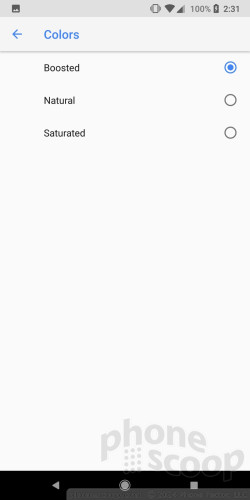
Google could not fix the Pixel 2 XL's blue shift issue with viewing angles, since it's strictly a hardware issue. It's still among the worst I've seen. I find it distracting and it bugs me. It may not bug you at all.
In sum, the screen is not as good as I want it to be for a device this costly. It's not a terrible screen, and likely not a dealbreaker for many, but it should perform better considering the price of this phone.
Signal
Verizon is the only carrier that to sell the Pixel 2 XL directly, but the phone is available unlocked from Google with support for a generous number of LTE bands. For example, it covers T-Mobile's Band 66, though not Band 71. You can also run the phone on Google's Project Fi MVNO, which is essentially T-Mobile.
I tested the Pixel 2 XL on AT&T, T-Mobile, and Verizon in the metro NYC area and was generally pleased with the results on all three carriers.
The phone maintained a connection each network in strong and weak coverage areas alike. I had no trouble connecting calls under even the poorest network conditions. The phone held onto calls during lengthy highway drives without issue.
Data performance was excellent. With support for Cat 15 LTE, the Pixel 2 XL is one of the quicker devices I've tested in recent months. It easily supports media streamed via LTE. For example, I didn't run into any trouble with YouTube, Spotify, or even Netflix.
Sound
The Pixel 2 XL is a better voice phone than the smaller Pixel 2. To start, the earpiece produces dramatically more volume. I didn't have any trouble hearing calls in noisy spaces such as coffee shops and city streets, even with the volume at mid levels. Clarity ranged from good to great. The earpiece didn't suffer from distortion when cranked, and voices generally had a warm timbre when emanating through the speaker. Those I spoke to through the Pixel 2 XL said I sounded excellent.
The speakerphone is punchy and clear. I was easily able to hear calls in a moving car. You have to put the volume all the way up, yet it remains free of distracting distortion.
Ringers and alerts are very loud. The vibrate alert did very well.
The phone has stereo speakers and I was pleased with their performance. Again, the 2 XL outperforms the 2 by just a bit here. The speakers produced more balanced sound. You can easily fill a small room with sound at max volume. The speakers make the 2 XL a great personal entertainment device.
Battery
The Pixel 2 XL has a good-sized 3,250 mAh battery under the metal skin. On most days, the phone is a battery champ. It will push from breakfast to bedtime and beyond. I can't complain at all, as I was rarely able to drain the phone's battery fully. The Pixel 2 XL should get most people through a full day without issue.
The Pixel 2 XL supports Quick Charge 3.0 and it ships with a high-speed charger. Plug the phone in for as little as 20 minutes and you'll gain several hours of additional uptime. The mostly-metal rear panel precludes the phone from supporting wireless charging.
Bluetooth, GPS, NFC, WiFi
The Pixel 2 XL connected to a wide range of accessories. It had no trouble managing Bluetooth headphones for calls or music. Calls made via Bluetooth headsets were good, and sometimes borderline excellent. Calls routed to my car's hands-free system were above average. Music sounded very good through Bluetooth headphones and speakers.
The GPS radio was quick and accurate. The Pixel 2 XL often pegged me within seconds and was accurate to within about 10 feet. The phone was a fine navigation tool, as the fast data performance and GPS accuracy meant it was spot-on when driving from Point A to Point B.
With NFC aboard, you can use the Pixel 2 XL to make mobile payments via Android Pay. I found it worked well. The NFC radio also helps pairing with some Bluetooth accessories.
The 2 XL's WiFi radio is very, very good.
Software
Editor's Note: Because the Pixel 2 and Pixel 2 XL share essentially identical software, some of the following text has been carried over from our review of the Pixel 2.
Lock Screen
The Pixel 2 XL's lock screen evolves a bit when compared to last year's Pixel XL.
Lock Screen
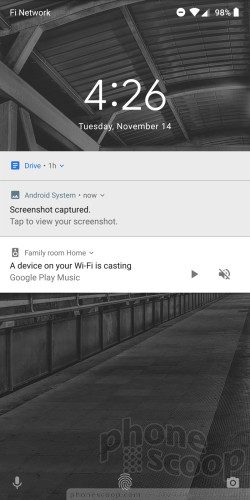
The absolute best addition is the Now Playing widget. When music is playing nearby you can see the song name and artist, which shows up in small white text at the bottom of the screen. Now Playing works even when the device is offline. It's freaking awesome. It works very quickly. According to Google, it has stored the necessary data of some 17,300 songs in a small 50 MB file to enable this tool. I already can't live without it.
The phone includes a nice Ambient Display, which keeps the clock and day/date on the screen at all times. Thanks to the OLED display, this doesn't destroy your battery life the way it would with an LCD. You can turn the Ambient Display off if you wish.
You have the typical options for managing how much information is displayed by incoming messages, which means you can block them altogether or view the full contents when they arrive. My favorite option is in between. Picking the "hide sensitive content" setting means new emails, messages, or calls simply pop up as a small icon under the clock.
The lock screen itself is typical for an Android handset. A quick double tap on the display or press of the screen lock button wakes the screen and reveals a large digital clock with detailed notifications lined up beneath it. Notifications can be dismissed one at a time or en masse. The Quick Settings shade is accessible from the lock screen, and shortcuts to voice search and the camera are near the bottom.
The fingerprint reader is your best bet as far as security goes. I easily set up several fingerprints, and the reader is quick and accurate. It's far quicker to use the fingerprint reader than type in a PIN or password, though those options are available, too. What's more, you can secure individual apps/folders with the fingerprint sensor, allowing you to add another layer of protection to your device. Truly, the Pixel 2 XL has the best fingerprint reader I've tested this year. Use it.
Last, the fingerprint reader supports a simple gesture shortcut. Swipe down on the reader to open the notifications shade.
Home Screens
The Pixel 2 XL ships with Android 8 Oreo, which revises the home screen experience a bit when compared to Android 7.
Home Screen
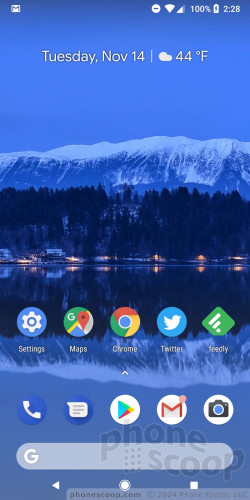
To start, the Google search bar is now at the very bottom of the screen, closest to your thumb. Five app shortcuts are situated above the search bar. Out of the box, a nice date widget crosses the top of the screen.
One of the more obvious changes in Android 8 Oreo is the addition of notification dots. Apps that have notifications will display a small dot in the top right corner of the app icon. A long press of the app icon will call up a window that lets you see the basics of those notifications, such as the most recently received email or text.
The left-most home screen is reserved for the Google Now panel. While Google Assistant awaits your command, Google Now is proactive. Google Now scans your calendar, email, location history and other personal data to offer suggestions about travel times, potential events, and so on. I like that it encapsulates the weather and news headlines, too. I've come to love Google Now over the last couple of years.
The settings menu of Android 8 Oreo drops colored text altogether and switches to dark gray text on a white background. (I liked the blue color of Nougat better.) I continue to appreciate that the settings menu provides lots of useful details so you can glean information (battery life, storage space) at a glance without digging into sub-menus.
The drop-down Quick Settings panel is still a cinch to use.
The Pixel 2 XL includes the awesome Google Wallpaper app, which automatically rotates the home and lock screens through high-quality, themed wallpapers.
The longer 2:1 aspect ratio of the 2 XL means more content fits on the screen when compared to the Pixel 2. For example, you can put an extra row of app shortcuts on the homescreens. That can be handy.
On the performance front, the Pixel 2 XL ships with Qualcomm's top processor, the Snapdragon 835, accompanied by a respectable 4 GB of RAM. This chip is amazing and the Pixel 2 XL chomps through everything without breaking into a sweat. I've never seen a phone download and install Play Store apps as swiftly as the Pixel 2 XL. The phone is wicked fast. There's no doubt in my mind the Pixel 2 XL delivers an experience that feels faster than any other Snapdragon 835 handset.
Camera
You can launch the camera with a double-press of the screen lock button or via the lock screen shortcut. The camera opens lickety-split.
Camera
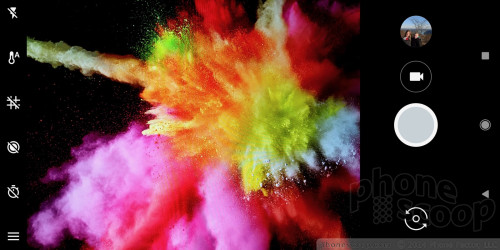
Google's camera app has a fairly basic feature set. There are just a few shooting modes: auto, slow motion, panorama, photo sphere, and the new one: portrait. I like having slow motion, but I'd also like to see timelapse or hyperlapse. The Pixel 2 XL does not include a manual mode, which is a pretty big omission for a flagship handset.
The portrait shooting mode is sort of an update to Google's old Lens Blur tool. Portrait lets you create shots where the subject is sharp, but the rest of the image is out of focus (sometimes called bokeh). With Google's old Lens Blur tool, users needed to move the camera while shooting to gather the needed perspective data to define the subject. That's all gone with portrait mode on the 2 XL; you now just point and shoot (and hold still!)
The results are relatively good, though not always perfect. You can see in the shot of my daughters in front of a castle how well-blurred the background is. Conversely, the shot of them standing on the bridge clearly has some background that's still in sharp focus. In my experience, the Pixel 2 XL draws better boundaries around the subject's head than the iPhone X does.
It's impressive on a technical level, when you consider that most other phone makers need two lenses to create the same effect. This mode is easy to use and does a fine job relative to other phones offering this feature. It does take a second, and it's best if your subject is still. I like that the software saves both the standard and portrait shot.
The motion photo tool is pretty much exactly like the 'Live Photos" feature seen on the iPhone and high-end Samsungs. The Pixel 2 captures two seconds of video before you press the shutter button so you get some motion in your image. You can share the really short video clip or remove the motion and keep the normal still image. The only thing I don't like about Google's version of this tool is that it zooms in quite a bit, (to ensure all the backgrounds line up,) which means you may lose the framing of your shot.
The Pixel 2 XL focuses and captures images in a blink. Need to shoot video? Swipe the screen and the 2 XL will jump to video mode. There aren't any special video modes, but you can select up to 4K resolution.
I like that you can easily switch between the selfie camera and the main camera by twisting the phone. Even better, you can take blurred-background portraits in selfie mode.
The camera is painless to use.
Photos
The Pixel has a 12-megapixel sensor with optical image stabilization, PDAF, and an aperture of f/1.8. Those are all good specs. The phone leans heavily on the Snapdragon 835's advanced image signal processor and its HDR+ mode to put those megapixels to more effective use than many other phones on the market. The phone also has a dedicated, custom image chip that Google plans to enable soon. Given how good the Pixel 2 XL's images already are, I can't wait to see what this new chip does.
Concert Lighting

The Pixel 2 XL produces some of the best images to come from a smartphone. The basics — including focus, white balance, and exposure — are generally spot-on. The camera almost always did exactly what I wanted/expected it to do, even in challenging shots like bright sunlight or darkened performance spaces. I saw a small amount of grain in some low-light shots, but it's nothing egregious.
As noted above, the portrait shots are excellent. The live motion images are pretty good, too.
The Pixel 2 XL's 8-megapixel user-facing camera does a very good job. The phone includes a screen-based flash that produces above-average white balance. It helps a lot. Selfie addicts will truly appreciate the included portrait shooting mode and its fun results.
You can shoot 4K video with the phone. I was pleased with the video I captured and the 4K resolution looked great on my PC monitor.
Google is giving Pixel 2 XL owners unlimited, full-resolution storage in Google Photos for pictures and video. Shooting in 4K will eat up huge amounts of your phone's storage, but you can set Google Photos to "optimize" local storage by offloading files to Google's servers rather than keep them on the phone.
The Pixel 2 XL has one of the top-performing cameras available. Most people should be happy using it as their main imaging device for most occasions.
Squeezable Google Assistant
The Google Assistant gives the Pixel 2 XL a lot of its smarts. It ships with the phone and can be accessed by squeezing the sides of the phone. This is a feature Google borrowed from HTC, which gave a similar tool to its U11 flagship. How does it work?
It's pretty straightforward. Sensitive pressure sensors are placed in the sides of the phone. They can detect very small amounts of pressure, even when the phone is protected in a case. A short tutorial walks you through the process of setting up the squeeze action. You can control the strength and length of the squeeze needed to activate Google Assistant. You'll need to squeeze the phone below its "waistline".
While I like the general idea, the real-world experience doesn't live up to the hype. The biggest problem is accidental activation of Google Assistant. I can't tell you how many times I pulled the phone out of my pocket and accidentally triggered the Assistant because I grabbed the phone by its side edges. Simply gripping the phone too tightly can trigger Google Assistant.
Thankfully some tools buried in the settings menu will help. First, you can prevent Active Edge from triggering when the screen is off. Moreover, you can turn off the Active Edge entirely.
On the HTC U11 and U11 Life, the Edge Sense tool can be adjusted to perform a number of different actions, such as launching the camera. On the Pixel 2 XL only two actions are available upon squeezing: launching Google Assistant or silencing the ringer during an incoming call.
Active Edge
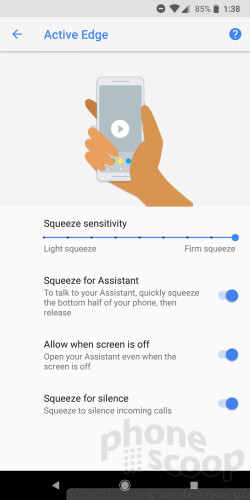
Google Assistant itself is amazing. It's come a long, long way since it launched in mid-2016. I use it all the time on my Android devices to compose text messages and emails, spin playlists, and even take selfies.\
Wrap-Up
Google and LG did a decent job with the Pixel 2 XL, but they could have done better. This flagship should have absolutely no peers, and yet missteps have marred it a bit.
Things about the phone I truly like include the solid build quality, trustworthy voice/data performance, excellent battery life, and the fast and clean user interface. Android 8 Oreo flies on this device thanks to the powerful Snapdragon processor. Google Assistant is as helpful as ever, though I could do without the squeezable sides gimmick. Toss in the simple camera app and the stellar images that come from the Pixel 2 XL and you have a solid foundation for recommending any phone.
Things that are so-so about this handset include the sheet-of-plywood dimensions, the ports and buttons, and that screen. While Google's first software update did make appreciable improvements to the display, I have a hard time seeing past the poor viewing angles.
Those who can see past the display will fall in love with the Pixel 2 XL. The phone nails the basics and lets Android fans tap into their favorite experience of Google's software.
Google sells the phone starting at $849 for the 64 GB model. The 128 GB model is $100 more. If you're interested in this phone, I suggest you take a trip to your local Verizon or Best Buy Store to take a look first. Hold it in your hand and check out the display. If you like what you see, then don't hesitate.
Module

Comments
Project Fi...





























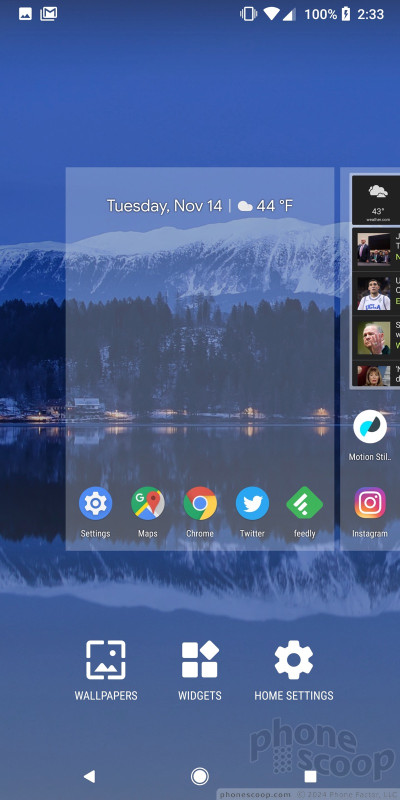





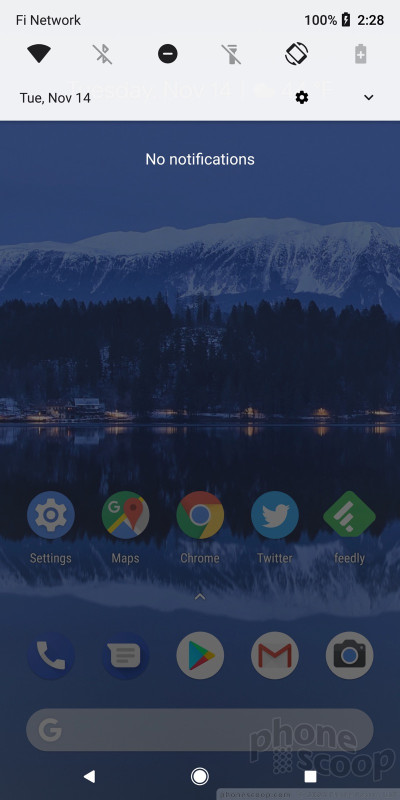











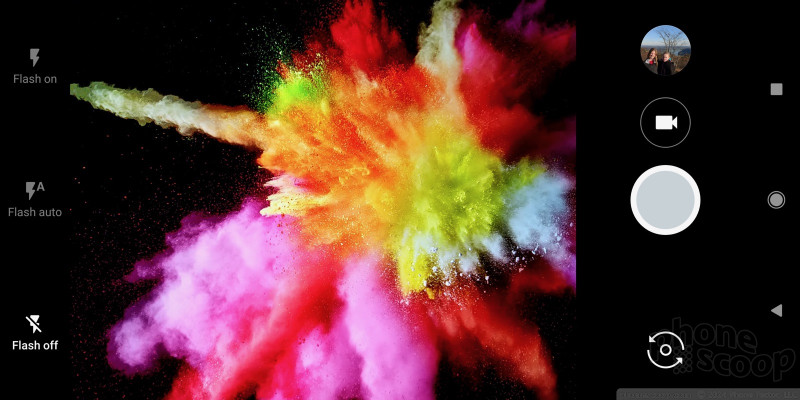
































 Hands On with Android P
Hands On with Android P
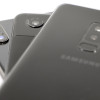 Smartphone Camera Shoot-Out: iPhone X, Pixel 2 XL, Galaxy S9+
Smartphone Camera Shoot-Out: iPhone X, Pixel 2 XL, Galaxy S9+
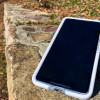 Review: Tech 21 Evo Check Case for Pixel 2 XL
Review: Tech 21 Evo Check Case for Pixel 2 XL
 Holiday Gift Guide 2017
Holiday Gift Guide 2017
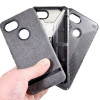 Review: UAG, Speck, and Incipio Cases for the Google Pixel 2 XL
Review: UAG, Speck, and Incipio Cases for the Google Pixel 2 XL
 Google Pixel 2 XL
Google Pixel 2 XL


